Last week, in Dublin, I had the pleasure of meeting an expert in the international fashion business Karl Nainani. We were talking about how a UX driven design approach could benefit fashion and luxury brands and we realised there were so many things to talk about.
While researching the topic, I fell in love with the approach of Ralph Lauren’s digital UX designer Regine Gilbert in her article “Approaching UX design with a fashion designers eye” which compared the UX design process with the fashion design process:
“Like the process of UX design, fashion design is iterative and goes through many phases before you’re ready to get it to your user or customer”
“I think there’s going to be a lot of people coming up with that fashion experience that you sort of get from high street to online” - Snap Fashion’s Jenny Griffiths said, referring to London’s physical shopping district.
There are a bunch of good articles about UX for fashion and luxury brands that analyse websites and apps of high-end brands. Every article agrees that having a great user experience is essential for the success of an online store.
Deeply understanding the fashion and luxury buyer’s mindset and customer journey are important facts to design a great experience. According to: “The Global Luxury Customer Journey”, a study by HavaasLuxHub, luxury brand customers are willing to pay more if they are provided with better, customized, meaningful experiences and services while they approach, select and purchase a luxury product. Isabelle Harvie-Watt, Global CEO of Havas LuxHub, says:
“Brands, particularly the traditional luxury fashion brands, need to shift their focus to their customers and on how to engage them. They need to know their data; they need to understand their customer; they need to be global yet increasingly local and personalized in their approach; they need to become much more digital but at the same time experiential.”
Luxury clothing retailer Burberry, for example, has been adding technology to their customer journey for a while. They’ve been doing great in social media and in e-commerce strategies with expectation that it will drive a third of their revenue growth over the coming three years.
“For many years we’ve been early adopters in digital, investing throughout the business along all points of the customer journey. The next stage of our digital journey is to extend this digital prowess into true e-commerce leadership. E-commerce in the luxury sector is expected over the next few years, to continue to grow by a double-digit percentage each year and to be the fastest-growing segment of the market”, said Burberry chief operating officer, John Smith.

“One of the biggest changes will be how the digital store merges with the physical store,” reminds Farfetch founder, Jose Neves, whose startup aims to help consumers locate items from small, high-end clothing boutiques.
When we think about fashion and luxury brands from the bricks and mortar world, we should think about the whole brand experience. Besides making sure that all brand elements are present on the website or app, the experience online should be an extension of the offline experience.
The cosmetic retailer Sephora make sure that their customers have a similar pleasure experience while navigating both online and in the physical store, often coordinating their approach on one channel to drive results in another. They use shopper data to integrate the retail and mobile experience, for example, Sephora to Go is a mobile app, which was designed to emulate the knowledge of a personal shopping assistant or a Sephora sales associate.
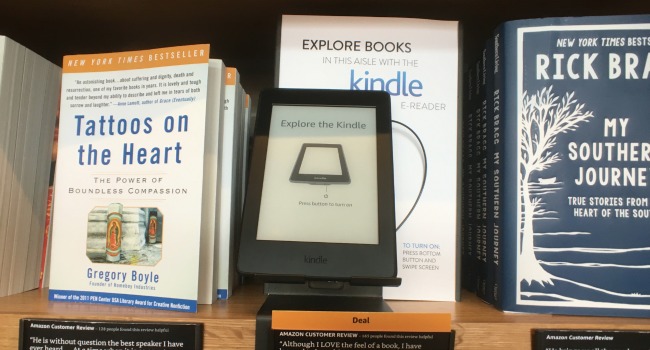
Amazon is an example of a store that uses this online and offline integrated strategy. In 2015 the most famous online e-commerce platform opened its first bricks and mortar book store bringing UX concepts from their on-line store:
“It is cleanly designed and navigable but no one will be overwhelmed with the selection, and no one will mistake the shopping experience for an Apple Store or anything like it”, as highlighted by Rob Salkowitz in an article for Forbes.
The integration between physical and online goes beyond: Amazon says “it stocks the location using data it collects from its website. The store stocks about 5,000 titles at any one time, compared with millions on its namesake website”, as mentioned Greg Bensinger in an article for WSJ “Amazon plans hundreds of bricks-and-mortar bookstores, mall CEO Says”. Amazon’s bricks and mortar store lets you use its app to check the prices and also showcases customers’ online book reviews for some titles and curates sections featuring selections from employees, including chief executive Jeff Bezos.
It is interesting to see how Amazon is changing the game and influencing other online stores to also get into the physical world such as the fashion site Bonobos, eye wear retailer Warby Parker and online makeup subscription service Birchbox.
“Seventy-two percent of millennials say they would rather spend money on an experience rather than a product”.
A study, “The Future of Luxury Retail Bricks-and-Mortar”, conducted by graduate students of the Fashion Institute of Technology class of 2015, had as a conclusion that despite e-commerce growth, physical storefronts still comprise 75% of the retail landscape. According to this research, bricks-and-mortar retail must rethink and reinvent its four key elements: assortment, service, navigation and product.
Another study “The Future of Luxury: Global Research Insights, Emerging Trends and New Business Models for 2030” conducted by another group from the same school says that to maintain a competitive edge, brands must embrace technology integration into in-store models to meet the demands of consumers. “But, most importantly, a luxurious aesthetic must be retained.”
A few high-end fashion brands have also been improving the retail customer experience by adding technology to their store. iBeacon technology, for example, allows stores to interact with their clients by delivering geolocalized offers at the right moment once the customer enters the store’s vicinity. There are lots of improvements to be made to “Contextual UX” and the ibeacons in store themselves, but also the iBeacon app’s design.
Staying with in-store technology, tech company OakLabs produced a touchscreen interactive mirror for fashion stores. Equipped with a RFID reader, it lets the customer know which items they have and offer the ability to request a different size or color without leaving the dressing room.
The Oak Interactive Fitting Room from Oak Labs, Inc. on Vimeo.
“We are creating a connected ecosystem of experiences that enable our retail partners to provide meaningful and magical customer experiences while bringing the next generation of insight into the physical store”, describes OakLabs on their website.
Fashion brand Ralph Lauren is already testing thenew tech driven fitting rooms at their store on Fifth Avenue.
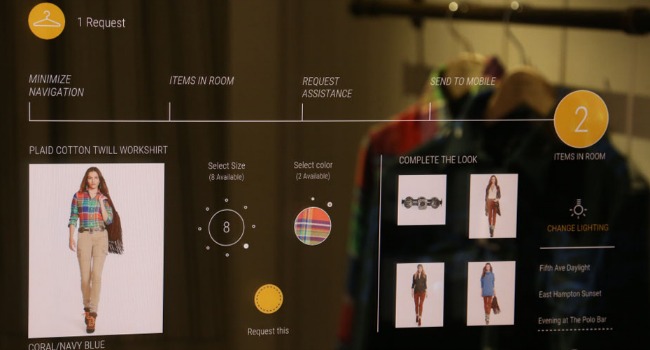
Virtuality Reality is also being used to connect real and virtual. Moschino teamed up with VR platform Livit to stream its 2017 Spring/Summer Show in 360 degree VR. The customised Moschino headset was given to the first 50 shoppers to arrive at Moschino’s New York and Los Angeles boutiques.
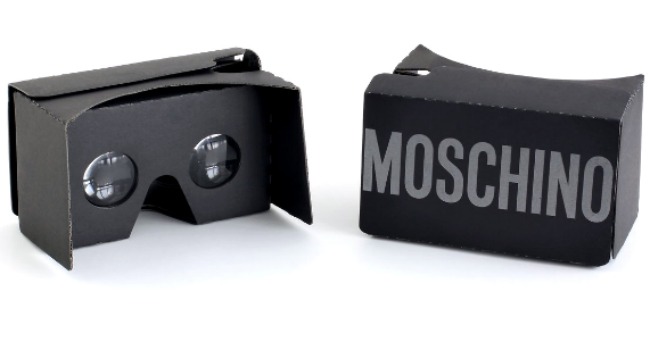
Moschino wasn’t the first high-end fashion brand to use virtual reality though. Dior created its own virtual reality headset last year, with high-definition image resolution and integrated holophonic audio. It gives the customer a 3D immersion into the backstage world at a fashion show. Dior Eyes headset was designed entirely by Dior’s own workshops in partnership with DigitasLBi Labs France using a 3D printer.
You can see the product design process here:
Back in 2014, before Google Glass was discontinued, French atelier Yves Saint Laurent used virtual tutorials through Google Glass to enhance demonstrations at it’s cosmetic counters. The beauty luxury brand rolled out Google Glass tutorials at retailers such as Bloomingdale’s and Selfridges to temporarily personalize the in-store experience using technology.
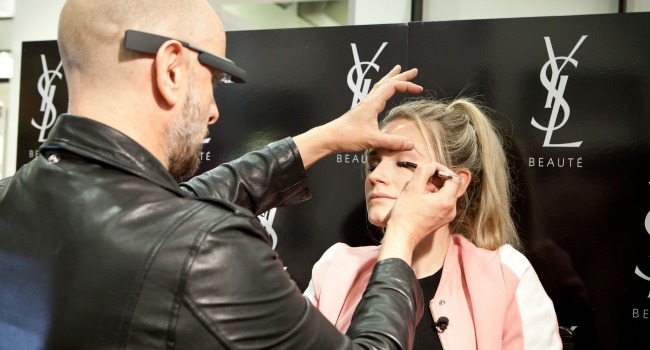
Talking about Google Glass, what to say about this Wearable? Tech companies have been taking advantage of fashion design to improve their products and benefit their clients.
In the article “Redefining the “UX” in Luxury: Taking cues from retailers”, Kristine Ugalde notes that tech and fashion can be industries playing on opposite sides. While tech people look to the future, the fashion world can be really traditional.
“The clear, definitive collaboration between Hermés and Apple Watch signified a shift in the haute couture sector”.
Design is one of the main worldly differentials for Apple. As a company they always make sure to have it as part of the whole customer experience. Fashion design is now a part of their product development, especially with the birth of the Apple Watch. After struggling to convince the fashion world that Apple Watch is attractive, the company partnered with luxury brand Hermès on a $1,250 device.

Another fashion brand that has started looking at the benefits of using wearable tech products is Michael Kors, who recently launched a line of connected products to work with smartwatches and other devices.
“Michael Kors is known for being at the forefront of the fashion watch category, and we expect to quickly emerge as a leader in connected fashion as well,” CEO John Idol said during American Fashion Week.
Fitbit’s activity-tracking bands partnered with renowned New York design house Public School, whose founders, Maxwell Osborne and Dao-Yi Chow, are currently rebooting DKNY. A collaboration with Fitbit, both designs encompass the fitness tracking company’s new Alta product:
“As we work with Fitbit to design the collection for Alta, our goal is to create accessories that inspire, delight and have the versatility to become a modern extension of our users.”
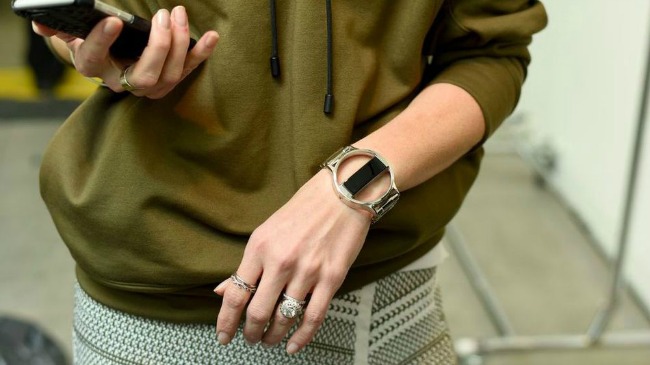
Fashion brand Mira launched it’s line of smart jewelry during the 2016 Consumer Electronics Show taking both the tech and the fashion world by storm when they first appeared on the scene last year.
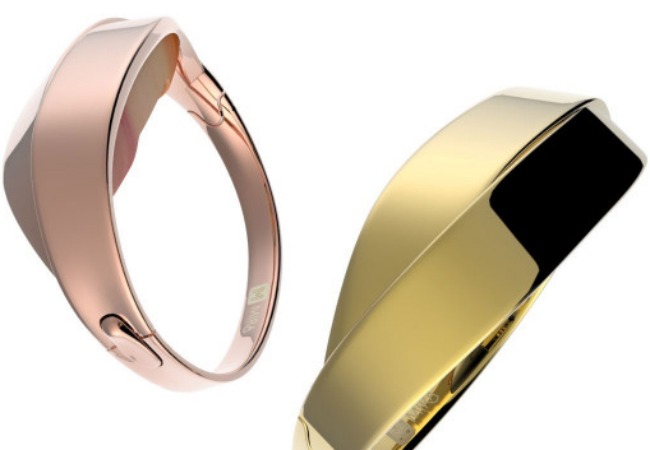
Fashion is a long way from saving wearables from fail, as fashion entrepreneur and ex-Channel corporate stratagest, Mona Bijoor,said in her article “Why The Fashion World Hates Wearables” for FastCoDesign:
“To be relevant in consumers’ lives, wearables need to extend beyond fitness. It’s obvious that for the Apple Watch to work it is going to have to have a wide selection of apps that different kinds of people can incorporate into their everyday lives”, she said.
The user experience of the wearable should be at the same level of relevance when building those devices. Luxury brands and tech companies still have many challenges to overcome in creating chic, easy-to-use wearables.
User experience is the key to making fashion and tech work together. Not only a brand and customer experience, UX driven design will allow fashion consumers to benefit from incorporating technology into their favorite fashion products and online or bricks and mortar luxury stores.
Also, although fashion and luxury are still too traditional to incorporate technology, Charlotte Wooding, from LuxurySociety.com, highlights the interest by consumers:
“Luxury consumers are enthusiastic adopters of new tech, and notably have the money to invest, so it’s important for brands to keep their fingers on the pulse to stay relevant.”
As fashion luxury brands are more open to the use of technology in their customer experience, UX professionals should be prepared for a universe of opportunities in helping these brands with these challenges. And to help UXers get started, UX designer Mitchell Wakefield has created a valuable reading list.